Māori art including: carving, tattoo, weaving was used for both decorative purposes and storytelling. Carvings could honor key members of a tribe or their ancestors, while tattoos could also often represent family and heritage.
However many of the patterns or symbols can represent other more specific or sometimes more generic things.
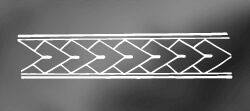
Pakati:
Dog skin cloak, representative of warriors/battles/courage and strength.
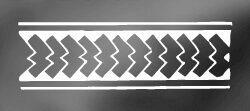
Hikuaua:
Representative of Taranaki (a region of New Zealand) as well as prosperity, mackerel tail.

Unaunahi:
Fish scales that represent abundance and health.

Ahu ahu mataroa:
Shows talent and achievement in athleticism or sport and can also be representative of a new challenge.
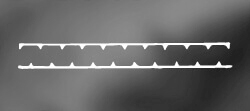
Taratarekae:
From whale teeth.
Manaia: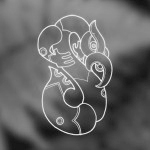
The manaia is known as a spiritual guardian, and carrier of supernatural powers. Traditionally depicted as a bird like figure with the head of a bird, body of a man and the tail of a fish it acts as a provider and protector over the sky, earth and sea. Likened to a bird sitting on your shoulder, looking after ones spirit, and guiding the spirit where it is supposed to go when the time comes.
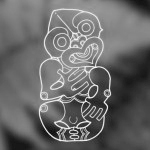
Hei tiki:
Commonly known as a good luck charm the tiki is also considered a symbol of fertility. Assumed to be clear thinking, perceptive, loyal and knowledgeable, the wearers strength is their character. The tiki is a talisman to the Maori people, and has been regarded as a good luck charm from the ancient times. The Maori believe the tiki represents the unborn human embryo. The most valuable tiki’s were carved from greenstone and were handed down through generations and treasured possessions.
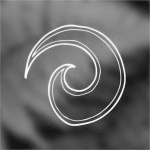
Koru (spiral):
The koru depicts new beginnings, growth and harmony, taken from the symbolism of an unfurled fern leaf. New Zealand has some of the most beautiful ferns in the world.

Hei matau (fish hook):
The Maori symbols or meaning or hei matau, more commonly known as the fish hook symbolises prosperity. Maori use fish in many of their traditional food dishes. Fish were so plentiful to the Maori that the simple ownership of a fish hook meant prosperity. The fish hook also represents strength, determination and good health, as well as providing safe journey over water.

Single twist:
The Maori symbols or meaning for the single twist represents the path of life, it is the symbol of eternity. The single figure eight is different than the double and triple twists mentioned below.

Double or triple twist:
These twists represent the joining together of two people, or two cultures for eternity and even though they may experience life’s up and downs they remain bonded by friendship and loyalty for life (a favourite of the Maori symbols).
Kaperua
From the Tai Rawhiti
Kaperua design
This pattern represents things doubled.

Koiri
From the Tai Rawhiti
Koiri Design
This pattern means to flourish.
Mangopare
From Aotearoa.
Mangopare Design
This design comes from the hammerhead shark and represents strength and power.
Mangotipi
From Mataatua, Tuhoe.
Mangotipi design
This design comes from the white pointer shark.

Ngaru
From Ngati Kahungunu
Ngaru Design
This design represents the cutting of the waves when the waka travelled.

Patiki
From Pare Hauraki
Patiki Design
The design represents the Patiki or flounder. It is a symbol of hospitality.

Puhoro
From Te Arawa
Puhoro Design
This design represents speed, swiftness and agility.